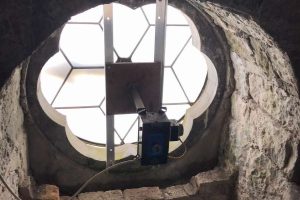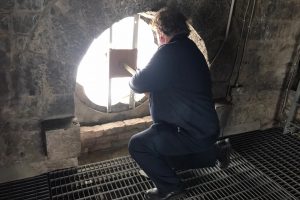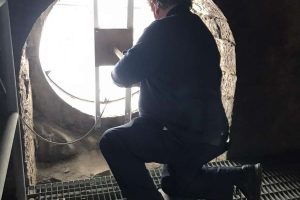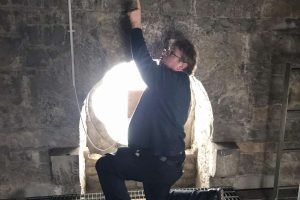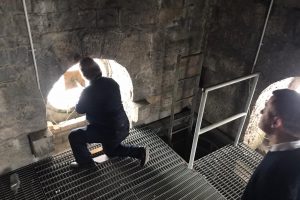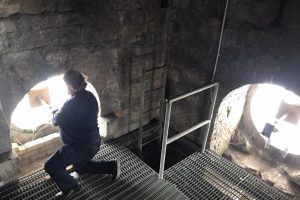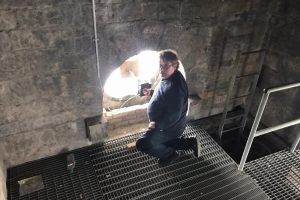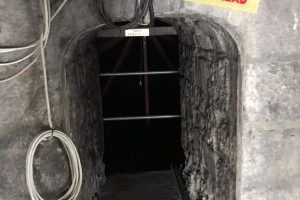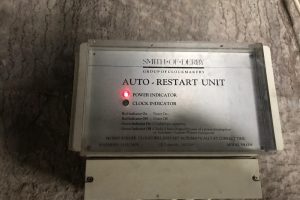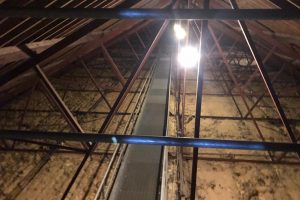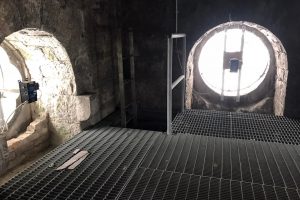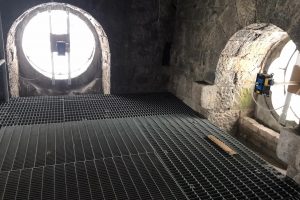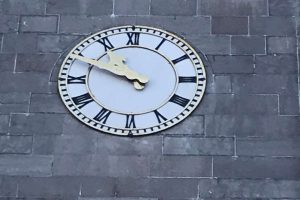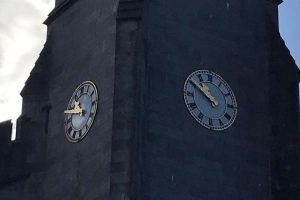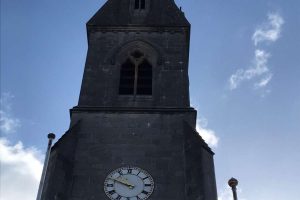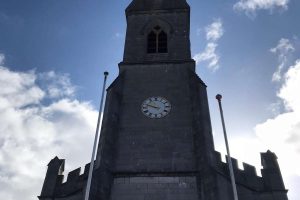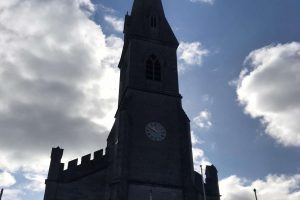To commemorate the Holy Year in 1950, Bishop Fogarty erected a clock on the tower of the Cathedral. The clock was purchased from Schneider Brothers, world famous clock makers, Black Forest, Germany through their agent, Mr. de Regge, Ennis.
The installation of the clock was completed in four weeks in the months of January and February of 1952. The mechanism of the clock is fixed on a specially constructed platform within the tower at a height of thirty-five feet. There are four faces, each eight feet nine inches in diameter. These are placed on the four sides of the tower at a height of 100 feet, and may be seen from all parts of the town. The long hands measure five feet and the short hands four feet. The movement of the hands is conveyed from the mechanism sixty-five feet below by a steel transmission shaft directed through the various ceilings by means of a series of universal joints.
In 1973, major restoration work saw the clock replaced by a movement that had been decommissioned from the old Mullingar manufacture. The clock faces were lowered on the tower incorporating three sides it is a Bed Type Clock striking on the hour and half hour, driven by two weights, a 200lb weight and a 300lb weight on the strike side. The movement was manually wound every eight days.
In 1995, the clock was replaced by an electric movement, linked to a satellite for accuracy. In the restoration work of 2006, these movements were relocated to the former Baptismal Chapel from the Tower and they are now driven by electronic motor.
In 2006, the Keltek Trust located three bells for a chime at the Cathedral. Two of the bells came from Cuddington, Buckinghamshire and the other from All Saints, Alton Hampshire.
Excerpt taken from Cathedral of Sts. Peter and Paul Ennis, by John Bradley in association with Clare Roots Society
